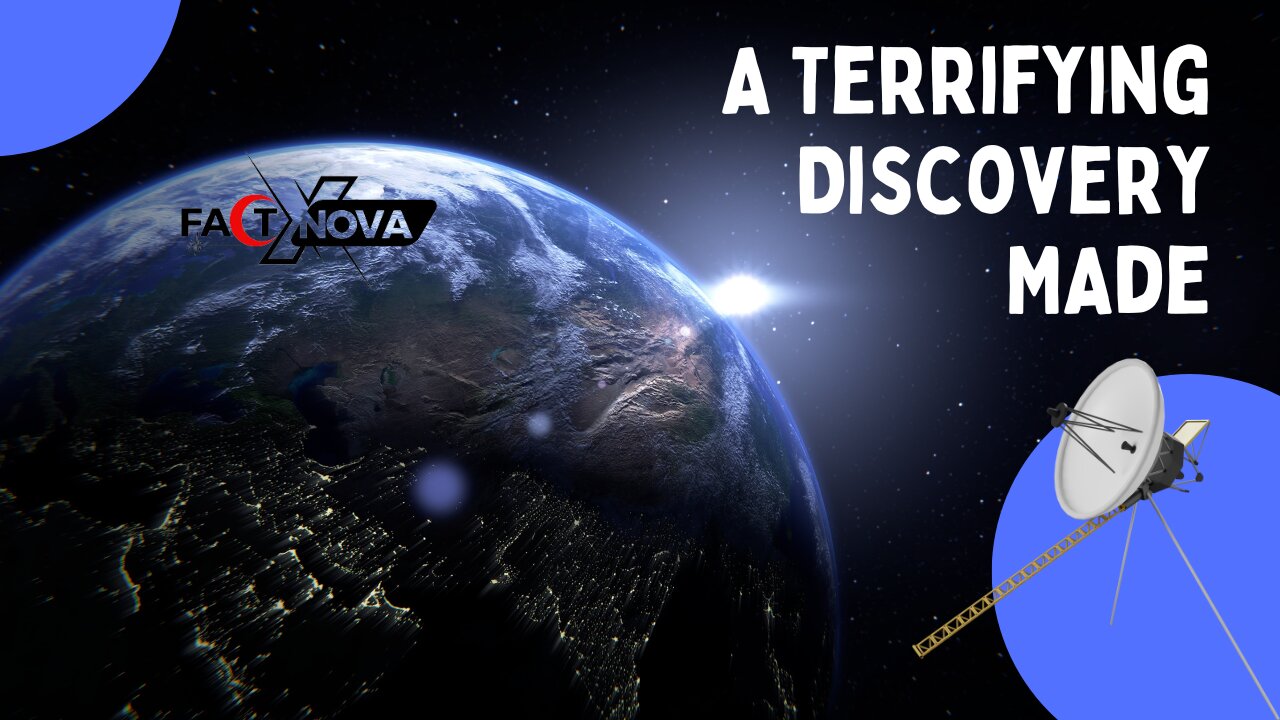Premium Only Content

3 MINUTES AGO: Voyager 1 Just Turned Back And Made A Terrifying Discovery
Get ready for an interstellar shocker that's bound to leave you on the edge of your seat! Imagine launching a spacecraft 45 years ago, only to have it continue exploring regions never meant to be ventured into, long after its expected lifespan. That's the mind-bending reality of a daring NASA mission that's rewriting the rules of space exploration. But here's the kicker: this intrepid spacecraft is not only billions of miles away from its launch pad, but it's also sending data back to Earth using technology that's more outdated than a vintage cassette player. Talk about a shocker! But that's not all. NASA's groundbreaking mission, launched in 1977, has just revealed a spine-tingling discovery that has set the scientific community abuzz and captured the attention of the entire world. What could this horrifying finding from the Last Frontier be, and what does it mean for us all back on Earth? Let's dive into the unknown and unlock the secrets of the cosmos!
It was a moment in history when the stars aligned, and two of the most awe-inspiring spacecrafts ever launched into space took flight. It was 1965, the dawn of the space exploration era, and Gary Flandro, a brilliant mind at NASA's Jet Propulsion Laboratory, had a monumental task: to plot the optimal path for a space probe to reach the distant giants of our solar system - Jupiter, Saturn, Uranus, and Neptune. Armed with nothing but a pencil, a beloved precision tool of engineers in the 20th century, Flandro made a jaw-dropping discovery. He realized that in the late 1970s and early 1980s, all four gas giants would align in a cosmic dance, forming a celestial necklace with Earth. This once-in-a-lifetime phenomenon meant that a spacecraft passing by each planet could gain a speed boost from their gravitational pull, like being pulled along by an invisible rope. Flandro calculated that a journey from Earth to Neptune, which would have taken 30 years, could now be accomplished in just 12 years, thanks to these gravity assists. There was just one catch - this alignment only happens once every 176 years.
#voyager #voyager1 #voyager2 #interstellarspace #NASAVoyager #astrum #VoyagerMission #VoyagerSpacecraft #Voyager1Distance #WhereIsVoyager1 #HowFarIsVoyager1 #Voyager1Location #EdgeOfSolarSystem #IsVoyager1StillInContact #VoyagerFinalImages #Voyager1Pictures #NASAVoyager1GoldenRecord #VoyagerDiscovery #VoyagerImages #VoyagerI #VoyagerII #HowFastIsVoyagerSpaceProbe
-
 58:14
58:14
theDaily302
14 hours agoThe Daily 302- Tim Ballard
30.1K1 -
 13:22
13:22
Stephen Gardner
7 hours ago🔥You'll NEVER Believe what Trump wants NOW!!
80.4K214 -
 54:56
54:56
Digital Social Hour
1 day ago $8.77 earnedDOGE, Deep State, Drones & Charlie Kirk | Donald Trump Jr.
42K4 -
 DVR
DVR
The Trish Regan Show
9 hours agoTrump‘s FCC Targets Disney CEO Bob Iger Over ABC News Alleged Misconduct
48.7K34 -
 1:48:19
1:48:19
The Quartering
9 hours agoElon Calls White People Dumb, Vivek Calls American's Lazy & Why Modern Christmas Movies Suck!
131K104 -
 2:08:42
2:08:42
The Dilley Show
10 hours ago $34.34 earnedH1B Visa Debate, Culture and More! w/Author Brenden Dilley 12/26/2024
115K25 -
 4:55:59
4:55:59
LumpyPotatoX2
13 hours agoThirsty Thursday on BOX Day - #RumbleGaming
109K5 -
 1:04:52
1:04:52
Geeks + Gamers
12 hours agoDisney RATIO'D on Christmas Day | Mufasa Embarrassed By Sonic 3
81.2K11 -
 8:27:46
8:27:46
Sm0k3m
16 hours agoPlaying games on Rumble
51.4K2 -
 10:37
10:37
Russell Brand
2 days agoHow is this even allowed?
203K890